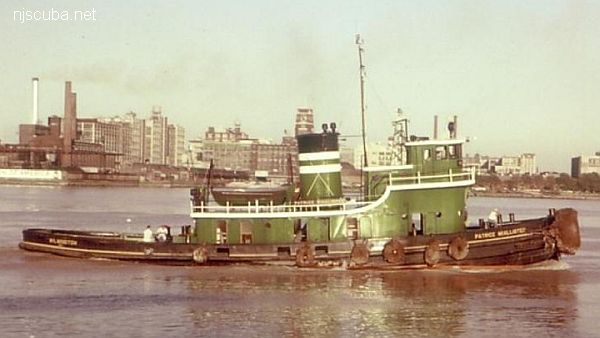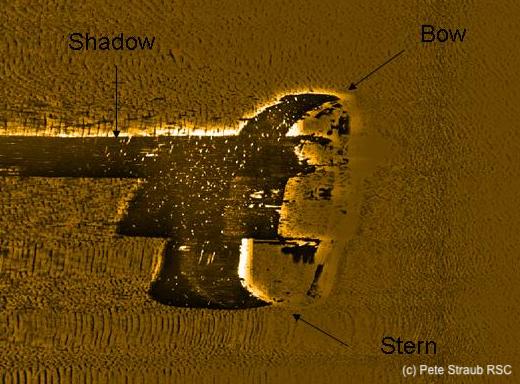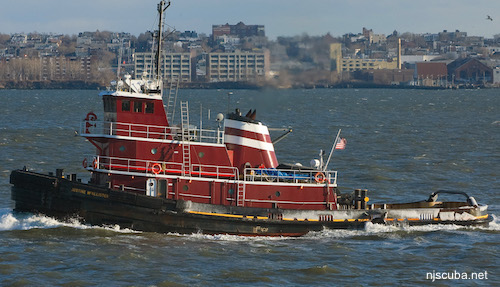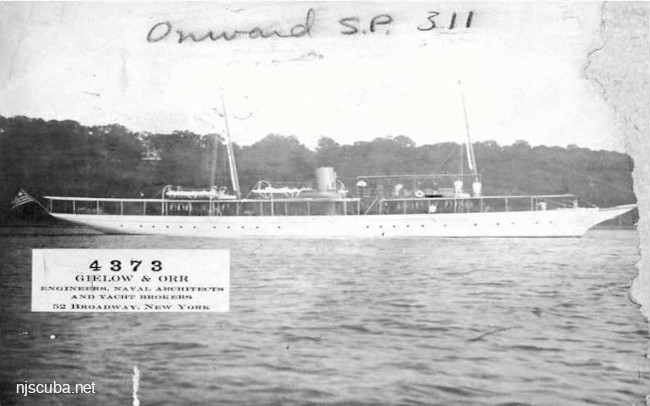Patrice McAllister

- Type:
- shipwreck, tugboat, USA
- Built:
- 1919, Johnson Iron Works, New Orleans LA USA, as Degrey
- Specs:
- ( 94 x 24 ft ) 201 gross tons, no crew
- Sunk:
- Monday October 4, 1976
foundered in storm while under tow - no casualties - Depth:
- 55 ft

Built in 1919, by Johnson Iron Works of New Orleans, Louisiana (hull #135) as the Degrey for the United States Shipping Board. In 1920, she was reassigned to the United States Army. The tug was later reassigned to the United States Army Corps of Engineersand designated as the Major Frazer. She was later acquired by the Avondale Towing Line of New York, New York and renamed M&J Tracy. In 1957, the tug acquired by the McAllister Brothers Towing Company of New York, New Yorkand renamed Patrice McAllister.
On October 4th, 1976 the Patrice McAllister was in tow by the tug Judith McAllister, en route from Camden, New Jersey to Jersey City, New Jersey, where the Patrice McAllister would undergo an overhaul of her main engine. The wind increased and sea conditions deteriorated. The Patrice McAllister began to take on water and eventually sank off of Atlantic City, New Jersey. The Judith McAllister was still attached to the wreck by her towing hawser and stayed directly over the wreck until the Coast Guard was able to mark the location with a buoy. The Patrice McAllister is still sitting upright and intact in 55 ft of water. Repowered in 1957, she was a single screw tug rated at 1,600 horsepower.
tugboatinformation.com




Questions or Inquiries?
Just want to say Hello? Sign the .